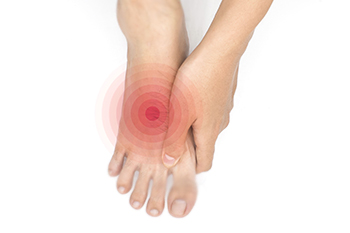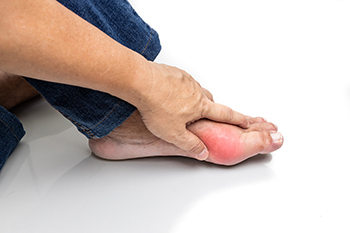
Maintaining proper foot care is important for diabetic patients. Many people who are diabetic have neuropathy, which is the inability to feel existing cuts or scrapes on the feet. This can be caused by elevated blood sugar levels that can happen from the foods that are eaten. An untreated wound on the foot may lead to incurring a foot ulcer, which is an infected wound. Serious consequences may occur if prompt medical attention is not received. It is beneficial to implement a good diabetic foot care routine daily. It can begin with washing and drying the feet thoroughly, especially between the toes. This can be followed by closely inspecting the bottom of the feet for cuts that cannot be felt. Many people use a mirror to accomplish this, or a family member or caregiver may help to do this. Trimming the toenails once per week may help to prevent an ingrown toenail from developing, which can cause severe pain and discomfort. If you have diabetes, it is strongly suggested that you are under the care of a podiatrist who can help you to manage this condition.
Diabetic foot care is important in preventing foot ailments such as ulcers. If you are suffering from diabetes or have any other concerns about your feet, contact one of our podiatrists from Comprehensive Foot & Ankle Center of South Jersey. Our doctors can provide the care you need to keep you pain-free and on your feet.
Diabetic Foot Care
Diabetes affects millions of people every year. The condition can damage blood vessels in many parts of the body, especially the feet. Because of this, taking care of your feet is essential if you have diabetes, and having a podiatrist help monitor your foot health is highly recommended.
The Importance of Caring for Your Feet
- Routinely inspect your feet for bruises or sores.
- Wear socks that fit your feet comfortably.
- Wear comfortable shoes that provide adequate support.
Patients with diabetes should have their doctor monitor their blood levels, as blood sugar levels play such a huge role in diabetic care. Monitoring these levels on a regular basis is highly advised.
It is always best to inform your healthcare professional of any concerns you may have regarding your feet, especially for diabetic patients. Early treatment and routine foot examinations are keys to maintaining proper health, especially because severe complications can arise if proper treatment is not applied.
If you have any questions please feel free to contact our offices located in Cherry Hill, Voorhees, Atco, and Turnersville, NJ . We offer the newest diagnostic and treatment technologies for all your foot and ankle needs.




